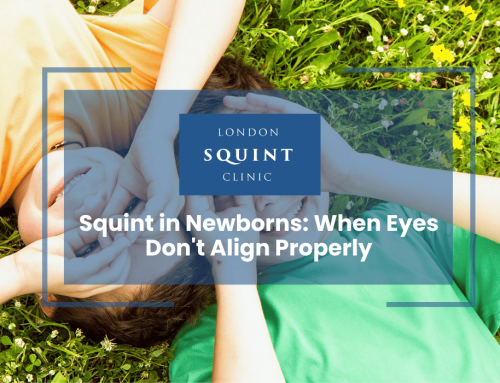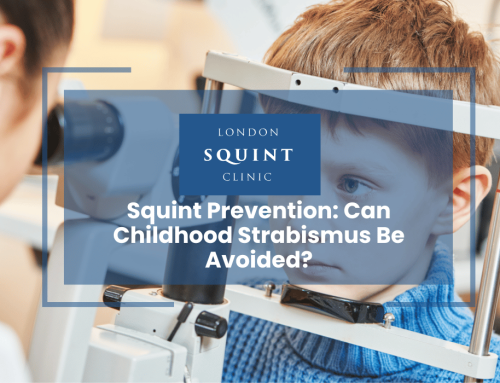Squint Diagnosis: Complete Eye Examination for Children
Essential Points to Remember for Your Child’s Squint Assessment
- A comprehensive pediatric eye exam is crucial for detecting and diagnosing squint in children.
- Parents should be aware of the signs and symptoms of squint, such as visible eye misalignment, frequent blinking, or head tilting.
- Ophthalmologists use a combination of tests, including cover tests, prism tests, and stereopsis tests, to evaluate eye alignment and binocular vision.
- Orthoptic evaluations play a vital role in assessing and managing squint, working closely with pediatric ophthalmologists.
- Preparing your child for a squint assessment involves explaining the process, ensuring comfort, and providing relevant medical information.
- Treatment options for squint may include glasses, eye patching, prism therapy, vision therapy, or surgery, depending on the type and severity of the condition.
- Regular follow-up visits and a collaborative approach with eye care professionals are essential for ensuring the best possible outcomes for your child’s visual development.
Here is the blog post content with the requested sections and formatting:
Table of Contents
- What Is a Comprehensive Pediatric Eye Exam for Squint?
- Signs and Symptoms of Squint in Children
- How Ophthalmologists Diagnose Strabismus in Kids
- Essential Tests for Detecting Eye Misalignment
- The Role of Orthoptic Evaluations in Squint Diagnosis
- Preparing Your Child for a Squint Assessment
- Next Steps After Confirming a Squint Diagnosis
What Is a Comprehensive Pediatric Eye Exam for Squint?
A comprehensive pediatric eye exam for squint, also known as strabismus, is a thorough evaluation of a child’s eye health and visual function. The assessment is performed by a pediatric ophthalmologist who specialises in diagnosing and treating eye conditions in children. The exam aims to detect any signs of eye misalignment, determine the type and severity of the squint, and evaluate the child’s overall vision development. A comprehensive squint exam typically includes a series of tests and measurements to assess the eyes’ focusing ability, binocular vision, and eye movement control. The ophthalmologist will also examine the eye structures and health to rule out any underlying conditions that may be contributing to the squint.
Signs and Symptoms of Squint in Children
Squint, or strabismus, is a condition where the eyes do not align properly, causing one eye to turn inward, outward, upward, or downward while the other eye focuses normally. Some common signs and symptoms of squint in children include:
- Visible misalignment of the eyes
- Frequent blinking or squinting
- Tilting or turning the head to look at objects
- Covering or closing one eye to see clearly
- Complaints of double vision or eye strain
- Poor depth perception or clumsiness
- Delayed visual development or milestones
It is essential for parents to be aware of these signs and seek a comprehensive eye exam if they suspect their child may have a squint. Early detection and treatment are crucial for preventing vision loss and promoting proper eye development in children.
How Ophthalmologists Diagnose Strabismus in Kids
Ophthalmologists diagnose strabismus in children through a combination of specialised tests and assessments during a comprehensive eye examination. The process begins with taking a detailed medical history and discussing any observed symptoms or concerns with the parents. The ophthalmologist will then perform a series of tests to evaluate the child’s visual acuity, eye alignment, and binocular vision.
These tests may include:
- Visual acuity measurement using age-appropriate charts
- Retinoscopy to determine refractive errors
- Cover/uncover and alternate cover tests to assess eye alignment
- Prism tests to measure the degree of misalignment
- Stereopsis tests to evaluate depth perception
- Ocular motility tests to check eye movement control
In some cases, the ophthalmologist may use specialised instruments or dilating eye drops to get a better view of the eye structures and rule out any underlying conditions. Based on the examination findings, the ophthalmologist will determine the type and severity of the squint and recommend an appropriate treatment plan.
Essential Tests for Detecting Eye Misalignment
Detecting eye misalignment is crucial for the timely diagnosis and treatment of squint in children. Ophthalmologists use a combination of essential tests to assess the alignment and function of the eyes during a comprehensive pediatric eye exam. One of the primary tests is the cover test, which involves covering one eye at a time while the child focuses on a target. This test helps determine if the uncovered eye moves to fixate on the target, indicating the presence of a squint.
Another important test is the alternate cover test, where the ophthalmologist rapidly alternates the cover between the eyes. This test can reveal the full extent of the misalignment and help classify the type of squint. Prism tests are also used to measure the degree of misalignment by placing prisms of varying strengths in front of the eyes until the squint is neutralised.
Stereopsis tests, such as the Randot or Titmus test, evaluate the child’s depth perception and binocular vision. These tests require the child to wear special polarized glasses and identify 3D images. Reduced stereopsis may indicate the presence of a squint or amblyopia. Assessing eye movement control through ocular motility tests is also essential to rule out any underlying neurological conditions that may be causing the misalignment.
The Role of Orthoptic Evaluations in Squint Diagnosis
Orthoptic evaluations play a crucial role in the diagnosis and management of squint in children. Orthoptists are allied health professionals who specialise in assessing and treating eye movement disorders, binocular vision abnormalities, and amblyopia. They work closely with pediatric ophthalmologists to provide comprehensive care for children with squint.
During an orthoptic evaluation, the orthoptist will perform a series of tests to assess the child’s visual acuity, eye alignment, binocular vision, and accommodative ability. These tests may include:
- Prism cover test to measure the magnitude of the squint
- Krimsky test for assessing eye alignment in young or uncooperative children
- Fusional vergence tests to evaluate the eyes’ ability to work together
- Accommodative tests to assess the eyes’ focusing ability
- Stereoacuity tests to determine the level of binocular vision
The orthoptist will also gather information about the child’s visual symptoms, medical history, and any previous treatments. Based on the evaluation findings, the orthoptist will collaborate with the ophthalmologist to develop a personalised treatment plan. This may include glasses, eye patching, prism therapy, or vision therapy exercises to improve eye alignment and binocular function. Orthoptic evaluations are essential for monitoring treatment progress and making necessary adjustments to ensure the best possible outcomes for children with squint.
Preparing Your Child for a Squint Assessment
Preparing your child for a squint assessment can help ensure a smooth and successful examination. Here are some tips to make the process easier for both you and your child:
- Explain the purpose of the visit in simple, age-appropriate terms. Reassure your child that the tests will not hurt and that you will be with them throughout the process.
- Schedule the appointment at a time when your child is well-rested and not hungry. Bring a favorite toy or comfort object to help them feel more at ease.
- If your child wears glasses, make sure to bring them to the appointment. Inform the ophthalmologist of any previous eye treatments or surgeries.
- Bring a list of your child’s medications and any relevant medical history. Mention any family history of eye conditions or vision problems.
- Encourage your child to ask questions and express any concerns they may have. Praise them for their cooperation and bravery during the examination.
- Be prepared for the possibility of dilating eye drops, which may cause temporary blurred vision and light sensitivity. Bring sunglasses for your child to wear after the exam.
Remember, a positive and supportive attitude can go a long way in helping your child feel more comfortable during their squint assessment. Work closely with the pediatric ophthalmologist and orthoptist to ensure the best possible care for your child’s visual health.
Next Steps After Confirming a Squint Diagnosis
Once a squint diagnosis is confirmed, the pediatric ophthalmologist will discuss the next steps and treatment options with you and your child. The treatment plan will depend on the type and severity of the squint, as well as your child’s age and overall visual development.
In some cases, the ophthalmologist may recommend observation and monitoring, especially if the squint is intermittent or the child is very young. Regular follow-up appointments will be scheduled to track any changes in the eye alignment and visual function.
If the squint is caused by a refractive error, such as hyperopia or astigmatism, glasses may be prescribed to help correct the misalignment. Wearing glasses can often improve eye alignment and binocular vision, particularly in cases of accommodative esotropia.
For more significant or persistent squints, the ophthalmologist may recommend a combination of treatments, such as:
- Eye patching to treat amblyopia (lazy eye) associated with the squint
- Prism therapy to help the eyes work together and improve binocular vision
- Vision therapy exercises to strengthen the eye muscles and improve eye coordination
- Squint surgery to physically realign the eyes and improve cosmetic appearance
Your child’s treatment plan will be tailored to their specific needs and may involve a collaborative approach with an orthoptist or other eye care professionals. Regular follow-up visits will be essential to monitor progress, adjust treatments as needed, and ensure the best possible outcomes for your child’s visual development. With proper care and management, most children with squint can achieve good vision and eye alignment.
For more information on detecting subtle squints, read our article on microtropia – tiny squints that are hard to detect.
Frequently Asked Questions
What is the best age for a child to have a squint assessment?
It is recommended that children have their first comprehensive eye exam between 6 to 12 months of age, or sooner if there are any signs of eye misalignment or vision problems. Early detection and treatment of squint are crucial for preventing amblyopia (lazy eye) and promoting normal visual development. If you notice any signs of squint in your child, such as crossed eyes or frequent squinting, schedule an appointment with a pediatric ophthalmologist as soon as possible.
How long does a comprehensive pediatric eye exam for squint take?
A comprehensive pediatric eye exam for squint typically takes about 1 to 2 hours, depending on the child’s age, cooperation, and the extent of the tests required. The exam may include a series of assessments to evaluate visual acuity, eye alignment, binocular vision, and eye health. In some cases, dilating eye drops may be used to get a better view of the eye structures, which can add additional time to the appointment. It is important to allow sufficient time for the exam and to schedule it when your child is well-rested and cooperative.
Can squint be corrected with glasses alone?
In some cases, squint can be corrected with glasses alone, particularly if the misalignment is caused by a refractive error such as hyperopia (farsightedness) or astigmatism. Wearing glasses can help reduce the eye strain and overaccommodation that may be contributing to the squint. This is often the case with accommodative esotropia, where the eyes turn inward due to excessive focusing effort. However, for more significant or persistent squints, glasses may be used in combination with other treatments such as eye patching, prism therapy, vision therapy, or surgery.
Is squint surgery the only option for treating eye misalignment?
No, squint surgery is not the only option for treating eye misalignment. While surgery can be an effective solution for realigning the eyes and improving cosmetic appearance, there are several non-surgical treatments that may be recommended depending on the type and severity of the squint. These include:
- Glasses to correct refractive errors and reduce eye strain
- Eye patching to treat amblyopia (lazy eye) associated with the squint
- Prism therapy to help the eyes work together and improve binocular vision
- Vision therapy exercises to strengthen the eye muscles and improve eye coordination
The pediatric ophthalmologist will develop a personalized treatment plan based on your child’s specific needs and visual development goals. In many cases, a combination of non-surgical treatments can effectively manage squint and promote healthy vision.
How often should a child with squint have follow-up eye exams?
The frequency of follow-up eye exams for a child with squint will depend on the type and severity of the misalignment, as well as the child’s age and response to treatment. In general, more frequent follow-up visits may be necessary during the initial stages of treatment to monitor progress and make any necessary adjustments. This could involve visits every few weeks to every few months. As the child’s vision stabilizes and the squint improves, the interval between follow-up exams may be extended to every 6 to 12 months. It is important to adhere to the follow-up schedule recommended by your child’s pediatric ophthalmologist to ensure the best possible outcomes for their visual development.
Find out if you are suitable for Double Vision Treatment
Not everyone is eligible for double vision surgery.
Find out if you could benefit from this life-changing surgery by taking the quick self-suitability quiz below:
Our most popular procedures

Hello, I’m Nadeem Ali
I’m one of the few eye surgeons in the world with 100% focus on Squint and Double Vision Surgery.
I have 24 years of eye surgery experience, and worked for 13 years as a Consultant at London’s renowned Moorfields Eye Hospital.
In 2023, I left the NHS to focus fully on treating patients from across the world at the London Squint Clinic. You can read more about me here.
There’s lots of information on the website about: squint surgery, double vision surgery and our pricing.
The most rewarding part of my job is hearing patients tell me how squint or double vision surgery has changed their lives. You can hear these stories here.
Mr Nadeem Ali
MA MB BChir MRCOphth FRCSEd(Ophth)





